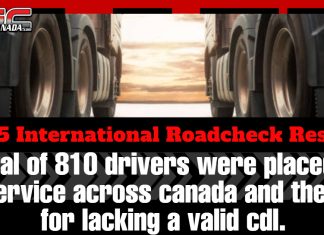On May 8, 2025, Senator Steve Daines (Republican – Montana) introduced a new version of the Deregulating Restrictions on Interstate Vehicles and Eighteen-Wheelers Act (DRIVE Act) in the U.S. Senate, targeting the potential federal mandate requiring speed limiters on heavy-duty trucks operating across state lines.
The bill follows a similar proposal introduced in the House of Representatives in April by Representative Josh Brecheen (Republican – Oklahoma).
The DRIVE Act was originally introduced in Congress in 2023 but failed to pass before the end of the legislative session. As a result, it had to be reintroduced in 2025 to restart the legislative process. The text of the bill clearly states that the Federal Motor Carrier Safety Administration (FMCSA) would be prohibited from issuing any regulation requiring commercial vehicles to be equipped with speed-limiting devices. This initiative comes as the FMCSA is reportedly preparing to release a rule in May 2025 that would mandate such devices on heavy trucks.
Several industry and agricultural organizations, including the Owner-Operator Independent Drivers Association (OOIDA), the National Association of Small Trucking Companies (NASTC), the American Farm Bureau Federation, and the National Cattlemen’s Beef Association, have voiced their support for the bill. These groups argue that enforcing a uniform speed limit for trucks could lead to more dangerous road conditions by creating greater speed differentials between vehicles.
They further point out that most truck-involved crashes occur in areas where the speed limit is below 55 mph (88 km/h), which undermines the relevance of a federal speed limiter mandate. “Maintaining the flow of traffic as defined by state law is essential to safety—unlike a one-size-fits-all speed cap imposed by a bureaucrat in Washington,” said Representative Brecheen. He illustrated this with the example of a rancher hauling cattle across state lines who, under such a rule, would be required to use a speed limiter if the vehicle exceeds 26,000 lbs. “Out-of-touch bureaucrats are trying to impose absurd regulations on Americans simply trying to make a living,” he added.
The FMCSA has considered the Canadian experience—particularly from Ontario and Quebec—while deliberating on speed limiter regulations. Canadian studies have shown that such devices can improve road safety, reduce fuel consumption, and lower greenhouse gas emissions. However, the FMCSA has also acknowledged some of the challenges observed in Canada, such as speed disparities between trucks and passenger vehicles that can increase the risk of collisions in congested areas.
The Canadian Perspective
While the U.S. debate continues, several Canadian provinces have already implemented mandatory speed limiter rules. Ontario was the first, requiring speed limiters set at 105 km/h (65 mph) for heavy trucks as of 2009, followed by Quebec and British Columbia.
Over time, enforcement in Ontario has become more flexible. In 2019, the province discontinued the use of the EzTrac device for verifying compliance due to compatibility issues with newer engines. Since then, enforcement has relied on a presumption of non-compliance for trucks exceeding 115 km/h (71 mph). This change has led to a dramatic drop in violations—from 1,173 in 2010 to just 36 in 2021.
Despite the lighter enforcement, Ontario authorities report a 34% reduction in fatal collisions involving heavy trucks since the regulation came into effect. A study by Transport Canada, which included data from Ontario’s Queen Elizabeth Way (QEW), found a 16% safety improvement on highway segments with smooth traffic flow thanks to speed limiters. However, in high-traffic areas, the safety benefits were reduced or nonexistent due to frequent passing and speed variation between vehicles.
While Canada’s experience has provided valuable insights, the FMCSA continues to analyze its applicability in the U.S. context before finalizing any mandatory speed limiter rule for commercial trucks.
Read More :
Trucking Industry: The Worst Changes According to Truck Drivers
This article was translated from French using a translation tool; errors may have occurred.














